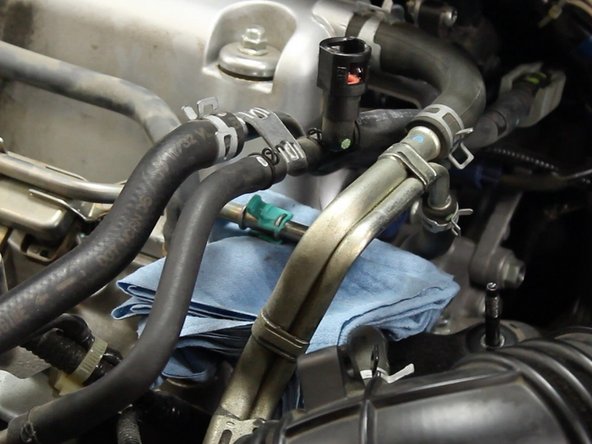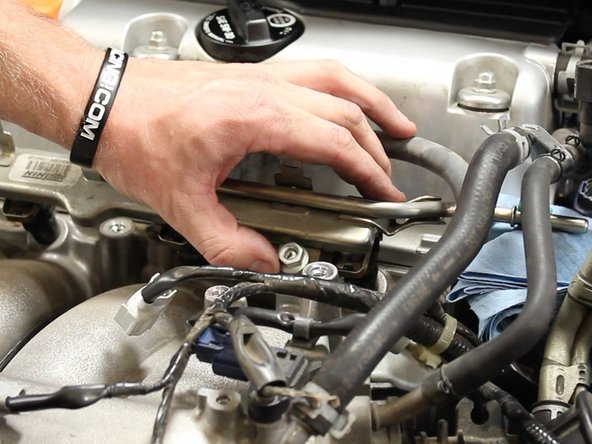-
-
Use a 10mm socket to remove the two nuts that hold the upper engine cover in place.
-
Remove the engine cover.
-
If you are installing an aftermarket fuel rail as seen in this guide, you will not be able to re-use the factory engine cover.
-
-
-
Using a small point pick, pry the pin lock upwards while pulling the wire out of the connector.
-
Be sure not to damage or deform the factory pins.
-
This guide shows the use of the factory pins in the RDX injector connectors. These pins WILL work, however they do not lock in place. If you choose to install the RDX injector connector pins (sold separately,) do that now.
-
-
-
Disconnect the fuel line from the fuel rail by pressing on the release clips.
-
Once the line has been disconnected, turn the fitting upward to prevent more fuel from spilling.
-
If the vehicle has been running within the past hour, the fuel system could still be holding pressure. When disconnecting the line, be sure to have plenty of towels for any fuel spray or spillage.
-
-
-
Insert injectors into the ports of the fuel rail. Make sure the wire harness connection clips are on the opposite side of the fuel rail mounting points.
-
Fuel or a small amount of oil applied to the o-rings will ease the installation of the injectors into the fuel rail.
-
Install the quick disconnect fuel line connection clip.
-
-
-
Re-install the fuel rail with the new injectors. Evenly push on the fuel rail to insure you evenly seat the injectors into the intake manifold.
-
Use a small amount of fuel or oil on the injector o-rings to ease in the installation of the injectors into the manifold.
-
Re-install the 12mm nuts to tighten down the fuel rail.
-
Cancel: I did not complete this guide.
One other person completed this guide.
7 Comments
Jason, you can swap out the injectors and keep the OEM fuel pressure, however is isn’t going to work as well without actually retuning the car. You should use KPRO and have the fuel trim / injector size adjusted accordingly.
David Cordell - Resolved on Release Reply
Can I use RDX 410cc injectors with Honda OEM ECU(fuel pressure 54psi)?? My car is EG K Swap…
Is RDX 410cc better than stock Keihin 310cc for OEM ECU?
Thanks a lot!
Jason Cheng - Resolved on Release Reply








































